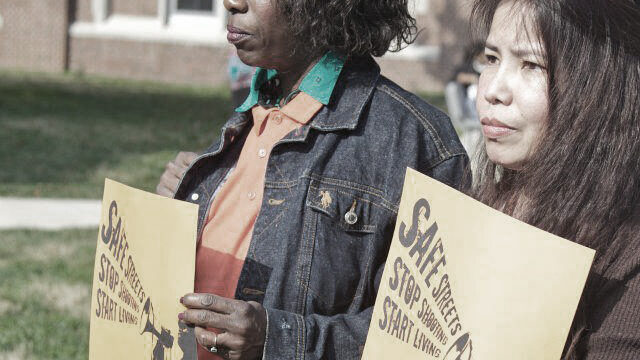Public health organizations urge Congress to increase funding for CDC violence prevention initiatives
April 2024

BCHC cosponsored a letter with Prevention Institute and Safe States Alliance – and an additional 70 organizations – urging the House and Senate Appropriations Committee on Labor, Health and Human Services, Education, and Related Agencies to fund the Division of Violence Prevention (DVP) at the CDC at $268.1 million.
Specifically, the letter asks Congress to include $268.1 million – including $250 million dedicated to the Community Violence Intervention (CVI) Initiative – for Community and Youth Violence Prevention through the DVP.
While all communities experience the long-lasting effects of violence on physical and mental health and social wellbeing, communities of color remain disproportionately impacted by community violence, including gun violence. According to a CDC analysis of provisional firearm homicide data for 2022, while the national rate decreased from 2021 to 2022, it remains higher than in 2019—with rates among non-Hispanic Black or African American persons, American Indian or Alaska Native, and Hispanic or Latino persons “notably higher during the period from 2020 through 2022 compared with 2019.” The analysis also found that firearm homicide rates increased for American Indian or Alaska Native persons in 2022 compared to 2021 and 2020.
Everyone deserves a safe community where they can live, work, learn, and play without fear of violence or harm toward themselves and their loved ones. Public health strategies for preventing violence are achievable and necessary for all of us to flourish.
Importantly, community violence is preventable, not inevitable, when we invest in a robust public health approach. Communities can be made safer by implementing policies and practices that address the root causes of violence through a public health approach. This approach relies on local community data to develop comprehensive strategies that are designed to contribute to community safety while decreasing and eliminating the risk factors for violence. It is also highly collaborative and driven by local needs, bringing together community members most impacted by violence with different sectors—including health care, public health, schools, parks, housing, law enforcement, social services, local businesses, faith-based institutions, and others—to collectively implement strategies based on the priorities and needs of each community.
Treating violence as a public health issue must include resourcing the CDC to build on their 20+ years of evidence-based violence prevention efforts. Our recommended investment of $268 million for Community and Youth Violence Prevention, which includes a $250 million dedicated CVI investment, is an opportunity to begin to do just that. These funds will support the implementation and scale up of existing community violence and youth violence prevention and intervention efforts. Through the dedicated CVI funds, up to 75 communities that experience disproportionate rates of violence will be able to select strategies based on their needs and priorities, including but not limited to hospital-based interventions and street outreach, which have already been shown to have positive impacts. For example, hospital-based violence prevention programs have shown promise in reducing the risk for violence among youth by reaching them during a “teachable moment.” CDC has a long history of partnering effectively with the health care sector and is therefore uniquely positioned to house and fund hospital-based violence intervention activities and research.
These funds also allow CDC to support selected communities by funding community-based organizations that have expertise in partnering with those most impacted by violence to provide training and technical assistance. Further, increased funding allows CDC to expand on its strong track record of applying data to inform action through increased research and evaluation activities and enhanced data collection, to further build the evidence base for preventing violence in communities experiencing the greatest burden of violence.
Read the letter
Download now Read the letter

